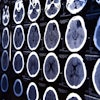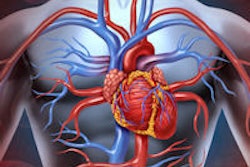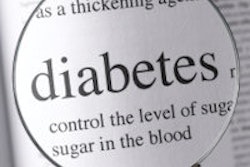
Research being presented at this week's American Heart Association (AHA) conference found that routine screening of asymptomatic diabetic patients with coronary CT angiography (CCTA) is not warranted for preventing death from coronary artery disease (CAD). The study is also being published in the Journal of the American Medical Association.
The researchers examined more than 900 diabetic patients and followed them for an average of four years; half underwent CCTA and half served as a control group. They found that outcomes including all-cause death, heart attacks, and unstable angina requiring hospitalization didn't differ significantly between the CCTA and control groups (JAMA, November 17, 2014).
Coronary CTA "involves significant expense and radiation exposure, so that justification of routine screening requires demonstration of net benefit in an appropriately high-risk population," wrote Dr. Joseph Muhlestein and colleagues from Intermountain Heart Institute in Murray, UT. "These findings do not support CCTA screening in this population."
Diabetes mellitus is the single most important risk factor for coronary artery disease, and such patients often develop severe but asymptomatic CAD, the extent of which can be reliably assessed with CCTA. However, it remains unproved whether routine CCTA screening in this population can lead to treatment changes such as aggressive medical therapy or pre-emptive coronary revascularization, thus reducing adverse events and deaths, the authors stated.
The study team randomly assigned 900 asymptomatic individuals from 45 clinics in the Intermountain Health system who had type 1 or type 2 diabetes of three to five years' duration to undergo CCTA (n = 452) or guidelines-based diabetic care (n = 448). All were followed for an average of four years, with the researchers assessing the differences between the groups.
In all, the CCTA group had 28 events (6.2%), compared with 34 events (7.6%) for the control group, the researchers found. As for a secondary end point of ischemic major adverse cardiac events, including death from coronary artery disease, nonfatal heart attack, or unstable angina, there was no statistically significant difference between the CCTA group's 20 events (4.4%) and the control group's 17 events (3.8%).
"Although CCTA screening demonstrated a marked diversity of CAD burden that was related to cardiovascular risk and led to more aggressive treatment recommendations for lipids, blood pressure, and glucose control in 70% of patients ... there was no advantage in reducing death and coronary heart disease outcomes," the authors wrote.
On the positive side, owing to strict controls on contrast use, there were no adverse effects on renal function.
The study benefited from a relatively large population, the average four-year follow-up, and careful patient management based on CCTA results, the authors noted. But the study also had a major limitation in its lower-than-expected rate of adverse cardiac events, which limited its ability to discern differences between the study groups.
CCTA didn't reduce the composite rate of overall mortality, nonfatal myocardial infarction, or unstable angina; therefore, the study does not support the routine use of CCTA in asymptomatic diabetics, Muhlestein and colleagues concluded.
"The results of this trial will be disappointing to those who have advocated for cardiac imaging for screening, but they are consistent with the prior negative results" of the Detection of Ischemia in Asymptomatic Diabetics (DIAD) study, which applied random SPECT exams in patients with diabetes, wrote Dr. Raymond Gibbons, from the Mayo Clinic in Rochester, MN, in an accompanying editorial.
It may be that the assessment of CCTA was overly optimistic, or that important changes in medical management following a positive CCTA scan are difficult to implement, Gibbons wrote.
"As suggested by the authors, the most likely explanation for the negative findings in this study was the excellent baseline medical therapy in these patients," he wrote.
Future randomized controlled studies must focus on larger groups of higher-risk patients, he added.
"Until future studies provide evidence of better patient outcomes with an imaging strategy, these results suggest that an 'ounce of prevention' with optimal guideline-directed medical therapy in asymptomatic patients with diabetes is more important than cardiac imaging," Gibbons concluded. "The challenge for clinicians is to more consistently deliver optimal medical therapy to all patients with diabetes."




















